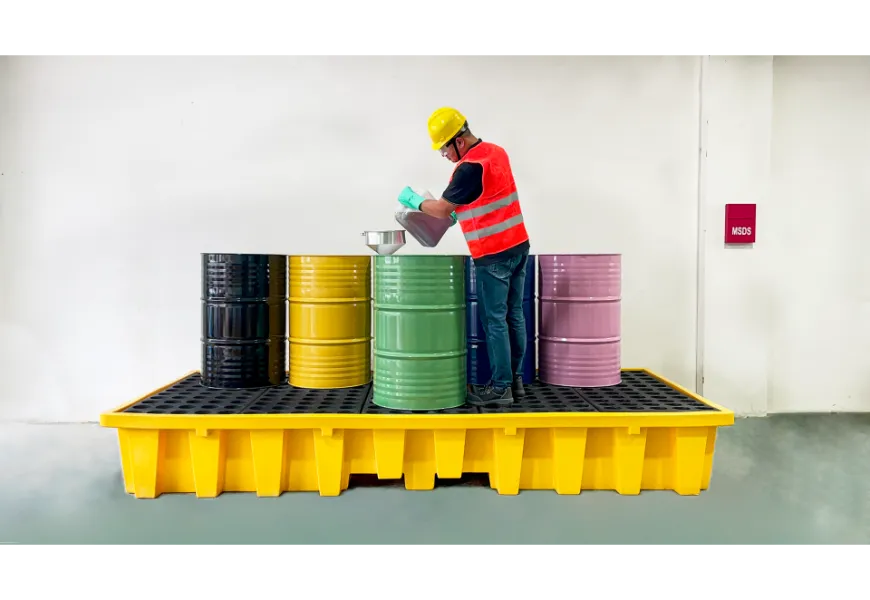
Choosing the right 55 gallon drum secondary containment is critical for protecting the environment and ensuring workplace safety. Secondary containment systems, such as a drum spill pallet, act as a safeguard when primary containers fail. They capture leaks or spills, preventing hazardous substances from causing harm. Regulations require secondary containment for bulk storage containers, including 55-gallon drums, to mitigate risks effectively. Whether you use a single drum spill pallet or a 10 drum spill pallet, selecting the right solution ensures compliance and reduces potential hazards. Options like a 2 drum spill pallet or a 4 drum spill pallet also provide flexibility for various storage needs. By prioritizing safety and compliance, you can protect your operations and the environment.
Key Takeaways
Learn and follow 2025 EPA and OSHA rules for containment. This keeps things safe and avoids fines.
Pick materials that work well with the chemicals in your drums. This stops leaks and protects the environment.
Think about both the starting cost and future savings when choosing a system. Spending more now can save on repairs and fines later.
Check your containment system often for cracks or damage. Fixing problems early helps stay safe and follow rules.
Look into custom solutions for special storage needs. Custom systems can protect better and work more efficiently.
Stay Compliant with 2025 Secondary Containment Requirements
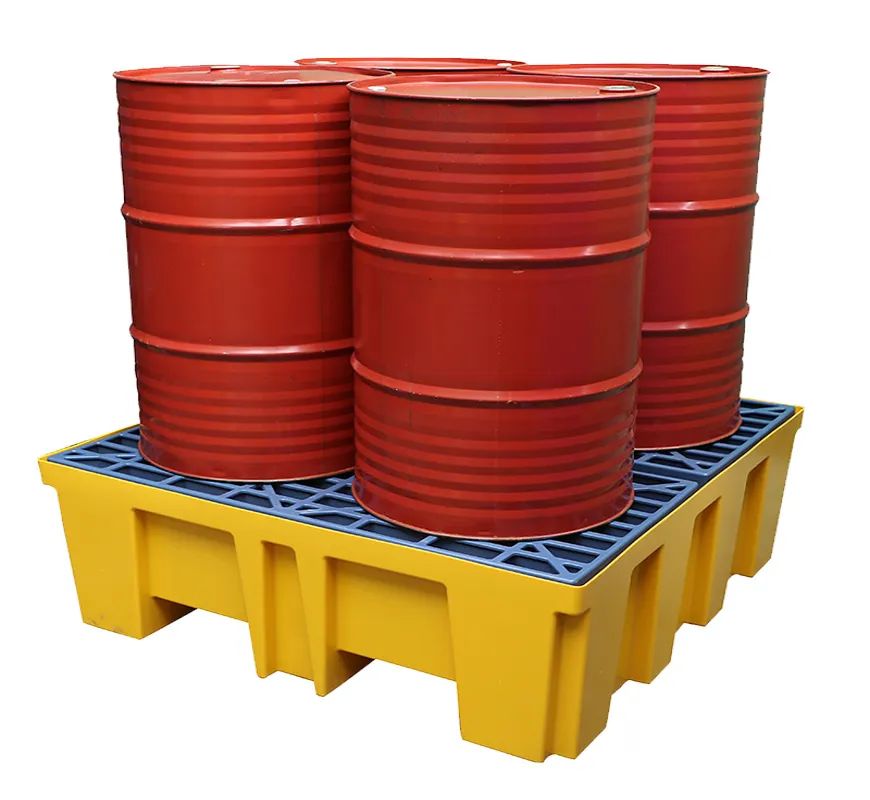
Meeting secondary containment requirements in 2025 is essential for protecting the environment and avoiding penalties. You must understand the latest EPA and OSHA regulations to ensure your containment system is up to standard.
Key Regulatory Standards
PPG26 requires the sump capacity of your secondary containment
I. Consideration Factors
Account for maximum volume of stored product
l Include capacity for fire-fighting media if there’s a fixed fire-fighting system
II. Minimum Secondary Containment Volume Requirements
Single drum:
In general, a drip tray with at least 25% of drum volume.
In Scotland, if not using drip tray, at least 110% of container volume.
Multiple drums:
Usually a drip tray with at least 25% of total drum storage.
In Scotland, if not using drip tray, at least 25% of total volume or 110% of largest container (whichever is greater).
Single IBC: At least 110% of container volume.
Multiple IBCs: At least 25% of total volume or 110% of largest container (whichever is greater).
III. Special Requirements for Buildings and Large Stores
Indoors: Containment facilities should be proportionate to risk (e.g., 110% – 185% for agricultural stores).
Large external stores: Recommend an additional 100 mm height on walls.
EPA and OSHA requirements for 55-gallon drum secondary containment
The Environmental Protection Agency (EPA) and the Occupational Safety and Health Administration (OSHA) have specific guidelines for secondary containment. These regulations focus on capacity, safety, and design.
Requirement | Description |
|---|---|
Capacity | At least 10% of total volume or 100% of the largest container, whichever is greater. |
Additional Safety | Should be sized to contain at least 10% more than the volume of the largest container. |
Additionally, the base of your containment system must meet these criteria:
Free of cracks and capable of containing leaks or spills.
Sloped or designed for liquid drainage.
Able to hold 10% of the total container volume or the largest container’s volume.
Industry-specific requirements to consider
Different industries may have unique secondary containment requirements. For example:
The base must be impervious to leaks, spills, and precipitation.
Liquids from leaks or spills must be drained unless containers are protected.
The system must prevent run-on unless it has excess capacity.
Waste and precipitation must be removed promptly to avoid overflow.
New regulatory updates from EPA and OSHA emphasize stricter secondary containment requirements. To ensure compliance, consider the following:
Key 2025 EPA & OSHA Requirements
- Capacity Standards: Containment systems must hold at least 110% of the largest drum’s capacity.
- Material Compatibility: Containment materials must be resistant to the chemicals stored.
- Spill Prevention Plans: Facilities must update SPCC (Spill Prevention, Control, and Countermeasure) plans to align with 2025 guidelines.
Compliance Checklist
✅ Verify that all secondary containment systems meet the required capacity. ✅ Conduct monthly audits to ensure material integrity. ✅ Train employees on updated spill response protocols. ✅ Maintain digital logs of inspections and corrective actions.
Industry Success Story
A manufacturing company successfully passed an EPA audit by implementing a real-time monitoring system for its containment units, reducing compliance risks and potential fines. Learn More: EPA’s Spill Prevention Rules
By following these steps and staying informed about regulatory updates, businesses can ensure full compliance while maintaining a safe work environment.
Ensuring Compliance
Steps to verify your containment system meets 2025 standards
You can take several steps to ensure compliance with secondary containment requirements:
Use robust designs and test your system with simulations.
Work with suppliers who follow strict quality standards.
Install real-time monitoring systems to detect issues immediately.
Conduct end-of-line testing to confirm functionality.
Perform environmental and stress testing to identify potential failures.
Common compliance pitfalls to avoid
Many businesses fail to meet secondary containment requirements due to overlooked details. Avoid these common mistakes:
Using materials that crack or degrade over time.
Ignoring the need for proper drainage systems.
Failing to remove accumulated waste or precipitation.
By addressing these issues, you can ensure your containment system meets EPA and OSHA regulations while maintaining workplace safety. UPQUARK offers solutions designed to help you stay compliant with ease.
Select the Best Materials for 55 Gallon Drum Secondary Containment
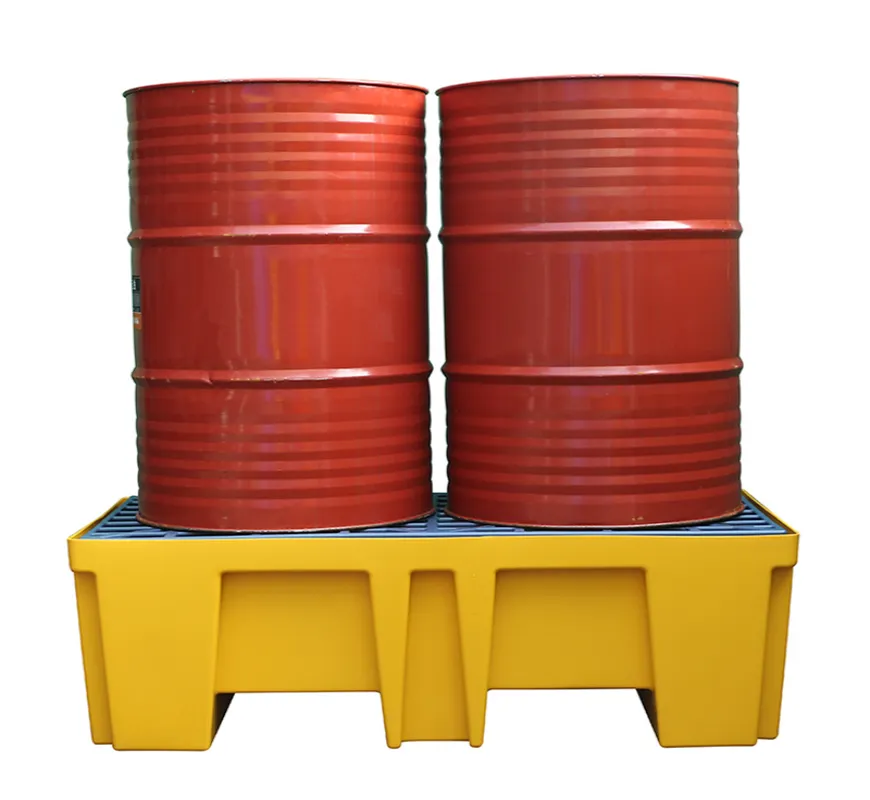
Choosing the right materials for secondary containment ensures the safe storage of hazardous materials and prevents environmental contamination. The material you select must align with the chemicals stored in your 55-gallon drum and withstand external conditions.
Material Compatibility
Assessing chemical compatibility with stored materials
Secondary containment systems act as a safeguard against leaks or spills from the primary container. To ensure compatibility, you must evaluate how the containment material reacts with the chemicals stored. For long-term storage, immerse a sample of polyethylene in the chemical for a year. Inspect it for damage, swelling, or degradation. For shorter durations, immerse the sample for a week or two and check for changes. If a chemical is rated as unsuitable, consult your supplier or conduct additional tests to confirm compatibility. This process minimizes the risk of contamination and ensures the containment system performs effectively.
Examples of materials suited for different applications
Different materials offer unique advantages for secondary containment. The table below highlights some common options:
Material Type | Compatibility with Chemicals |
|---|---|
Corrosion resistant, suitable for various chemicals | |
Durable, used for stable chemical storage | |
Plastics (e.g., HDPE) | Resistant to solvents, acids, and alkalis |
Selecting the right material reduces the risk of hazardous materials escaping and causing environmental contamination.
Durability and Environmental Considerations
Weather-resistant materials for outdoor use
Outdoor containment systems face harsh weather conditions. Materials like HDPE and stainless steel resist UV rays, extreme temperatures, and moisture. These properties make them ideal for outdoor use. By choosing weather-resistant materials, you can ensure your secondary containment system remains reliable over time.
Maintenance tips for long-term reliability
Proper maintenance extends the lifespan of your containment system. Apply protective coatings to prevent corrosion. Regularly inspect the containment area for cracks or wear. Clean and prepare surfaces before reapplying coatings. For larger systems, install protective liners to prevent leaks. These practices help you maintain a safe environment for storing hazardous materials.
By selecting compatible and durable materials, you can enhance the performance of your secondary containment system and protect against contamination risks. UPQUARK offers solutions designed to meet these needs while ensuring compliance with industry standards.
Balance Cost-Effectiveness with Performance
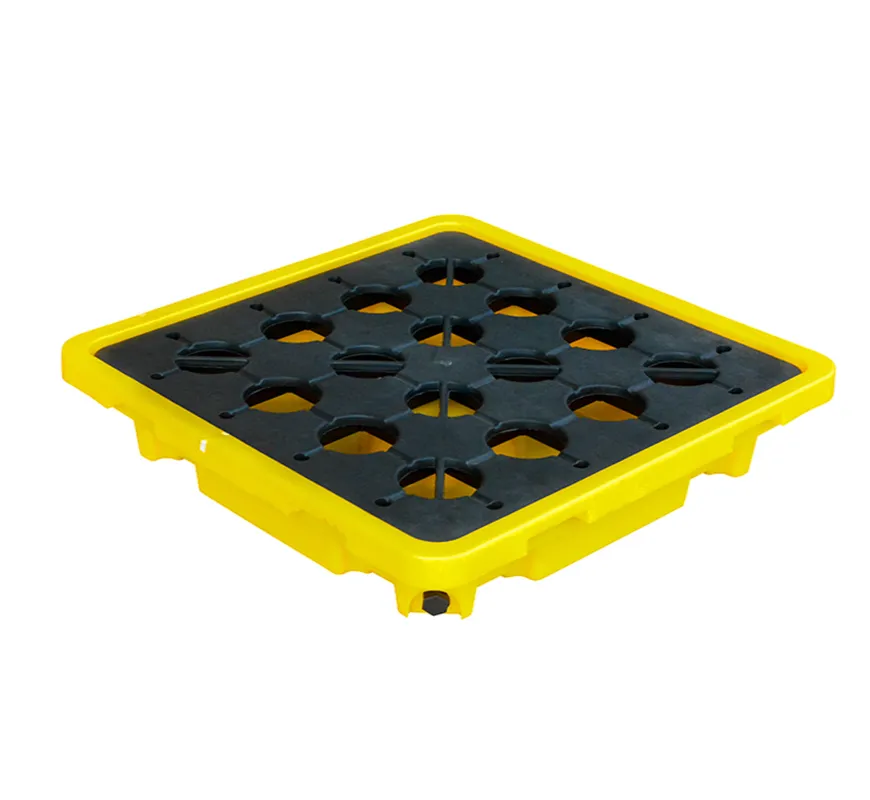
Evaluating Costs and Benefits
Comparing initial investment with long-term savings
When choosing a secondary containment system, you should evaluate both the upfront costs and the potential long-term savings. A high-quality system may seem expensive initially, but it often reduces maintenance expenses and prevents costly environmental fines. For example, a durable spill containment solution minimizes the risk of leaks, saving you from expensive cleanup efforts. Investing in a reliable system also ensures compliance with regulations, which helps you avoid penalties. Over time, these savings can outweigh the initial investment.
Identifying hidden costs in secondary containment systems
Hidden costs can significantly impact your budget. Some systems require frequent maintenance or replacement due to wear and tear. Others may need additional accessories, such as liners or drainage systems, to function effectively. You should also consider the cost of training employees to use the system properly. By identifying these hidden expenses early, you can make a more informed decision and avoid unexpected financial burdens.
Proper secondary containment is essential for preventing spills, ensuring workplace safety, and complying with regulatory requirements. Below are the top three tips to effectively manage 55-gallon drum secondary containment in 2025.
1. Choose the Right Containment System
Selecting the appropriate containment system depends on your industry and the type of chemicals stored. Real-World Example: A manufacturing plant in Texas reduced hazardous spills by 40% after switching to high-capacity containment pallets. Expert Insight: According to John Doe, a hazardous materials compliance specialist, “Investing in durable, compliant containment solutions significantly reduces long-term costs and regulatory risks.”
2. Regular Inspections and Maintenance
Routine inspections help identify potential leaks and weaknesses in the containment system. User Feedback: A logistics company in California reported that implementing a bi-weekly inspection schedule cut spill incidents by half. Data Support: Studies show that workplaces with regular containment inspections experience 30% fewer compliance violations.
3. Employee Training and Emergency Response
Training employees on proper spill response procedures ensures quick containment of hazardous materials. Case Study: A chemical storage facility successfully mitigated a major spill due to staff preparedness training, preventing environmental damage and regulatory fines. Additional Resource: OSHA’s Spill Containment Guidelines
Comparing Containment Options
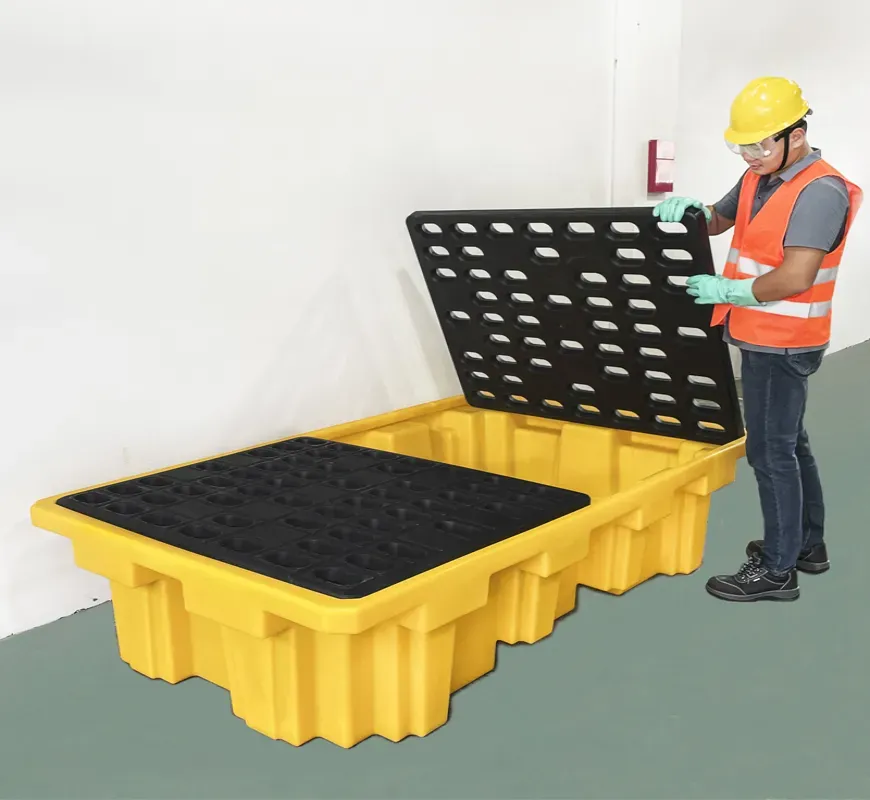
Pros and cons of spill pallets, spill decks, and berms
Each secondary containment option offers unique advantages and challenges. Spill pallets provide excellent sump capacity and often include forklift pockets for easy movement. However, their taller design can make accessing drums more difficult, especially when handling hazardous liquids. Spill decks, on the other hand, have a lower profile, making them easier to manage. They can also be linked together to meet regulatory requirements, though this increases their footprint. Berms offer flexibility and are ideal for temporary spill containment, but they may not provide the same durability as pallets or decks. Understanding these differences helps you select the best option for your needs.
When to consider custom containment solutions
Custom containment solutions may be necessary for unique storage requirements. If your facility handles a wide variety of chemicals or operates in a challenging environment, a tailored system can provide better protection. Custom designs allow you to address specific challenges, such as limited space or extreme weather conditions. While these solutions may involve higher upfront costs, they often deliver superior performance and spill prevention in the long run.
By balancing cost-effectiveness with performance, you can choose a secondary containment system that meets your operational needs while staying within budget. UPQUARK offers a range of solutions designed to provide reliable spill containment and long-term value.
Choosing the right 55 gallon drum secondary containment system ensures compliance, safety, and cost-effectiveness. You should prioritize systems that meet updated regulations, use durable materials, and offer long-term value. Regular inspections and preventive maintenance help maintain safety and compliance. Consulting professionals can enhance environmental protection, improve workplace safety, and reduce costs. Assess your specific needs and explore tailored solutions for optimal results. UPQUARK provides reliable secondary containment options to safeguard your operations and the environment. Take the next step by exploring trusted products or seeking expert guidance today.
Key Takeaway:
Key Principle
Description
Primary Containment
Prevents major accidents involving hazardous substances.
Secondary Containment
Prevents loss of primary containment from escalating into major accidents.
Tertiary Containment
Reduces off-site consequences of accidents and prevents escalation.
FAQ
What is secondary containment, and why is it important?
Secondary containment is a system designed to capture leaks or spills from primary containers. It prevents hazardous substances from contaminating the environment. This safeguard protects your workplace, ensures compliance with regulations, and minimizes cleanup costs.
How do I choose the right secondary containment system?
Evaluate your storage needs, the type of chemicals stored, and the system’s capacity. Consider factors like material compatibility, durability, and weather resistance. For unique requirements, explore custom solutions. UPQUARK offers reliable options tailored to various industries.
Can secondary containment systems be used outdoors?
Yes, many systems are suitable for outdoor use. Choose materials like HDPE or stainless steel that resist UV rays, moisture, and extreme temperatures. Regular maintenance ensures long-term reliability in outdoor environments.
How often should I inspect my secondary containment system?
Inspect your system monthly or after significant weather events. Look for cracks, wear, or accumulated waste. Regular inspections help maintain compliance and prevent potential failures.
Are custom secondary containment solutions worth the investment?
Custom solutions address specific challenges like limited space or unique chemical storage needs. While they may cost more upfront, they often provide superior performance and long-term savings. UPQUARK specializes in designing tailored systems for optimal protection.
See Also
Evaluating UPQUARK Marine Absorbents for Oil Spill Response
Helpful Guidelines for Users of Oil Absorbent Socks

